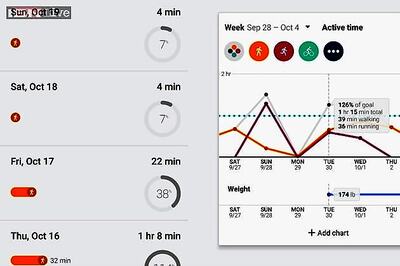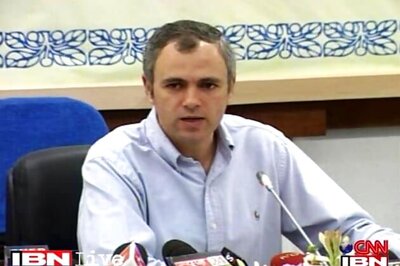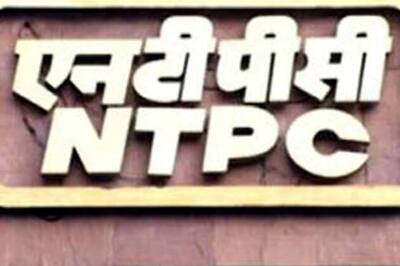
views
“A man without a vote is a man without protection”, said Lyndon Baines Johnson, the 36th US President, arguably the oldest surviving democratic republic on the planet. Johnson is often hailed for successfully pushing through the US Congress with Voting Rights Act of 1965, a landmark law which made restrictions designed to deny the vote to African Americans illegal.
Cut to 21st century India, the largest democracy where state-of-the-art electronic voting machines (EVMs) are deployed to elect MPs and MLAs. The citizen appears to be in an urgent need for protection for pressing the button of his or her choice. The constitutional promise of free and fair elections is increasingly under threat from the very technology and practices adopted to deliver on that guarantee.
Day after day, the media is reporting instances of politicians threatening voters with dire consequences if they do not toe their line on polling day. While an entire village was allegedly threatened with murder and destruction lest it votes against a regional party, another sitting MP reportedly invoked a hoary Hindu superstition of inflicting a sansyasi’s curse on every voter who refuses to “gift” him a vote.
Two ministers serving in a state government allegedly reminded voters that they would be at the mercy of local police once the paramilitary forces deployed to ensure law and order during polling are withdrawn. A more “ingenious” minister in another state is reported to have warned people about suffering an electric shock if they pressed an EVM button other than the one allotted to his party.
A central minister was, in fact, caught on camera explaining her lack of appetite for a victory that is not flavoured with votes from a certain minority community. At another meeting, this gastronomic approach was replaced by a strictly business-like explanation about how the proportion of votes cast in her favour would determine prioritisation of villages for developmental works. All of this was justified in the name of the “greater common good”. Four years ago, an overenthusiastic sibling had threatening to cut off water and power supply to a village if they did not vote for his sister.
The malaise is common and runs across political parties of various hues. Such voter intimidation is a criminal offence, inviting a prison term between one to five years – longer term is for intimidating voters of SC and ST communities. It can also be a ground for setting aside the election of a successful candidate. However, such adverse consequences are rarely heard of.
Rule 49M of the Conduct of Election Rules, 1961 provides a statutory guarantee of secrecy to the choice every voter makes while pressing the button placed next to his favoured candidate’s name or election symbol on the EVM. How then does anybody, let alone a vengeful politician, get wind of it? While the secrecy of an individual’s choice is indeed guaranteed by law, the election rules crafted to ensure the reliability of EVMs unfortunately take away such protection from the “community of voters” that is geographically linked to the polling stations where they cast their vote.
In order to understand how community-level choices in favour or against a political party become open access information, it is important to understand the earlier system of ballot papers that had an important safeguard.
A couple of decades ago, ballot boxes performed the jobs of modern day EVMs. Voters marked ballot papers with their choice and dropped them into the ballot box. On counting day, ballot boxes from every polling station were brought together and opened up simultaneously. All paper ballots were mixed together in a receptacle to ensure that polling booth-wise proportion of votes secured by any candidate or party would not be identifiable. This acted as a safeguard against voter intimidation at the community level.
The EVMs, on the other hand, require a different set of safeguards to ensure every vote is recorded and is verifiable, and any possibility of the underlying software developing a mind of its own and changing voters’ original choice is obviated. So the final result sheet, filled up in Form 20, comes in handy to ensure this certainty.
The returning officer, who is in-charge of polls in every Vidhan Sabha or Lok Sabha constituency, is required to record polling-station-wise data about the number of votes polled by every party candidate and independents on this form. The number of invalid votes (a rarity, thanks to the way EVM is designed) and those expressing a lack of faith in all candidates (NOTA-none of the above) are also recorded on this form. The data of form 20 is a public document and is displayed state and constituency-wise on the website of the Election Commission of India (ECI) after the election process is over. You do not need an RTI application to get this information.
For instance, take the final result sheet for the elections conducted in 2017 in Etmadpur Assembly Constituency (No. 86) of Uttar Pradesh uploaded on the ECI’s website. It reveals that only 838 out of 1,299 registered electors turned out to vote at Room No. 1 of the Prathamik Vidyalaya at Gijauli. While the BSP secured 401 of these votes, the BJP polled 335 and the remaining parties secured votes in single and double digits.
On the other hand, in Room No. 1 of the Prathamik Vidyalaya of Naglamattu in the same constituency, the EVM recorded only 171 votes in favour of BSP but 308 in favour of BJP. A total of 562 out of the 789 electors had turned out to vote. The candidates and political parties get free copies of voter lists by law. The list of residential areas covered by each polling station is also available on the ECI website at the click of a button. Armed with the mosaic of this information, it is only a matter of calculation as to how many citizens other than those known to be committed to a party voted in its favour. Inferring which segment of the community did not vote for one’s party is not rocket science.
It is no wonder then that political parties are increasingly hiring 20 and 30-year-olds as number crunchers and data analysts to identify voting patterns. The ostensible reason is to use these figures to improve a party or candidate’s outreach to the fence-sitters through better messaging. Use of such data for the kind of threats made this election season is just one step away. This is one dangerous and unfortunately poorly debated element that makes up ‘Desh Ka Maha Tyohar’ – Election Commission’s poll theme.
But that’s not all. The state government has another card up its sleeve to monitor the voter behaviour and it is susceptible to misuse. The Maharashtra government recently announced that it will install CCTV cameras in all sensitive polling booths across the 48 Lok Sabha constituencies for the ongoing general elections. These polling stations will be monitored through webcasting, thanks to broadband Internet.
Polling staff, police and micro-observers appointed by ECI will be watching every move of the voters, armed with digital and video cameras. Will these recordings be accessible to political parties in real time or later on through the RTI? There is no clarity in this regard. This is another layer of information which can help identify voter behaviour by combining it with the final result sheets already available online.
Even as I write this piece, a chill rises up my spine. My date with the festival of democracy is on the May 12. Will I be monitored as closely even though I live in an upmarket South Delhi locality?
It is not as if the ECI is not aware of these risks. To its credit, it has asked for the use of totaliser machines that will pool together votes recorded on EVMs in 14 different polling booths. This would bring back the safeguard that mixing up ballot papers offered earlier. A PIL is pending in the Supreme Court on this very issue, with the Law Commission backing the proposal. Bharat Electronics Ltd. and Electronics Corporation of India, which manufacture EVMs and VVPATs, have the technology to make such totaliser machines.
However, a committee of ministers is reported to have rejected this idea. The central government filed an affidavit in the apex court, opposing the move on the ground that such a mechanism would lead to outflow of data from the EVMs. None of these official documents have been placed in the public domain for the purpose of public consultation.
Meanwhile, voter intimidation continues unabated -- some reported in the media, other hiding below the surface like the proverbial bottom of the iceberg.
It is useful to recall what US President Johnson said while giving his assent to the Voting Rights Act: “The vote is the most powerful instrument ever devised by man for breaking down injustice and destroying the terrible walls which imprison men because they are different from other men.”
Sadly, several major players in India’s political establishment want to reinforce such walls and tarnish the constitution’s vision of a society firmly steeped in its foundational values, namely, justice, equality, liberty and fraternity. As the primary stakeholders of our democracy, we have a duty to protect it from depredatory elements who seek to represent us in Parliament, by hook or crook.
(The author is associated with the Commonwealth Human Rights Initiative, New Delhi. Views are personal.)




















Comments
0 comment